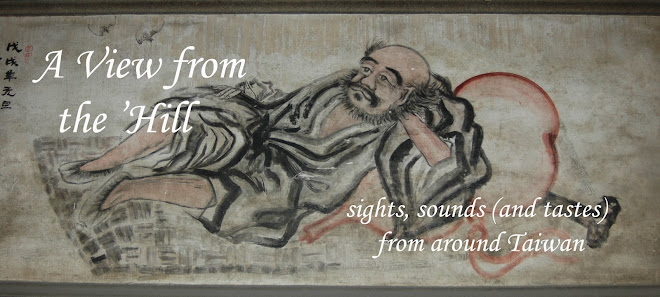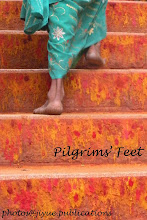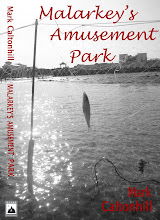YOUNG, GIFTED, AND DEAF - Four Thousand Olympians Heading for Taiwan
By Mark Caltonhill
On hearing that Taipei is staging the 21st Summer Deaflympics in September 2009, many people’s first response is to ask why the deaf need their own Olympics. This is not a question the players of the Taiwan Beer professional basketball team ask. At least, not since they tried playing while denied their sense of hearing.
It was weird, they said afterwards. An eerie silence. “All I could hear was my heart beating, and it sounded so loud.” “There was no sound of the ball bouncing on the floor. No fans cheering. No teammates calling for the ball. No referee’s whistle.” “And I couldn’t balance properly. It was as if I was about to fall over.”
The athletes were taking part in an exhibition game against the national Chinese Taipei deaf team to promote Deaflympics Taipei. To allow them to experience the game in something like its hearing-impaired format, and to level the playing field a bit, they wore earplugs. The result was, as reported, weird.
The Deaflympics are not exclusively for deaf people; to participate, athletes must have “a hearing loss of at least 55db in their better ear.” In fact, hearing-impaired people sometimes live, not in a world of total silence, but with a disorientating and frightening cacophony of partially audible sounds set against a partially deafening thunder.
And if more proof is needed that good hearing helps sporting achievement, a quick comparison of world records shows a gap of about 10 percent between Olympians and Deaflympians. The world record for the men’s 100m is 9.69 seconds, for example, as compared with that for deaf athletes, 10.61 seconds, while those for the 400m are 43.18 seconds and 47.09 seconds respectively. This gap might be exaggerated by the superior facilities and funds made available to able-bodied athletes, however.
Basketball and athletics are just two of 20 sports included in this year’s twenty-first version of the quadrennial event. Started in 1924 as the Silent Games, since 1995 it has been organized under the auspices of the International Olympic Committee (IOC). It will be held at the Taipei Arena, Taipei Gymnasium, Taipei Municipal Stadium, and another two dozen venues spread throughout the host city, surrounding Taipei County, and other northern counties.
The small but energetic Taipei green tree frog is the mascot of this year’s Deaflympics
The logo for the 2009 games -— the Chinese character for “north” (北; bei) in stylized form, composed of a running athlete and an ear -— can be said to represent all of northern Taiwan rather than merely Taipei, as has been officially announced. This would be fitting, since Ma Ying-jeou, who as Taipei mayor led the city’s 2003 bid for the event, is now the nation’s president. He evidently still feels passionate about the Deaflympics, as he referred to them as “my baby” while attending the September 2008 launch of the 365-day countdown.
The games’ mascot, a cartoon version of the Taipei green tree frog (Rhacophorus taipeianus) — smallest but perhaps most energetic of Taiwan’s eight endemic frog species — definitely represents the city. In addition, the banyan leaf and azalea flower worn by the male and female frogs, respectively, are Taipei’s official tree and flower.
Taipei, despite being a city of almost 3 million inhabitants, is noted for its green spaces and its fauna and flora. Indeed, it is unique among capitals around the world in having a national park within its boundaries. In fact, one venue of this year’s games, that for the orienteering competition, where competitors armed only with map and compass will navigate through open terrain, will be Yangmingshan National Park.
As with most, and probably all, Olympic events, some venues will not be completed until the last few months before the opening ceremony. At the time of this writing, for example, two of the three main sports grounds, the gymnasium and the 20,000-seat stadium, are still being built.
“They will be completed on time,” Creative Manager of the Taipei Organizing Committee of the 21st Summer Deaflympics, Jennifer Lee, assured Travel in Taiwan on January 5th at her office at Taipei Arena, next door to the stadium. “Moreover, they will be part of the games’ legacy, something Taipei City will gain. There used to be a 50-year-old sports stadium here, and hosting the Deaflympics has allowed us to bring forward the site’s renovation and expansion. Hopefully the international-standard facilities will enable Taipei to attract other major sporting events.”
Athletics, basketball, badminton, table tennis, the football (soccer) final, and the opening and closing ceremonies will take place in the three main venues, with other sports at 12 more venues throughout the city. Nevertheless, with the idea of the “sharing of riches,” the marathon and the road-cycling competitions, for example, will be staged along the north-coast highway in Taipei County between Jinshan and Danshui townships. Bowling will take place in the city of Zhonghe, shooting in Taoyuan, and swimming and water polo even further away in Hsinchu.
As "Travel in Taiwan" goes to press, more than 4,000 athletes have registered, as have around 1,300 coaches, officials, medical personnel, and translators. This represents a 50 percent-plus increase over the 2,400 participants in the previous Deaflympics, which were held in Melbourne, Australia, in 2005.
There are 164 athletes from Taiwan (or Chinese Taipei as it is known on such occasions), 107 men and 57 women. They will be hoping to improve on the nine gold medals won in Melbourne (including five in bowling), which elevated the team to fifth place behind Ukraine, Russia, South Africa, and the United States.
The largest contingent of athletes, numbering 241, comes from Japan; the smallest, a lone female tennis player, comes from Chile. She may have a good chance of a medal, however, since she is to be accompanied by two coaches. This means Chile has the highest ratio of coaches to athletes; highest that is, except for Zimbabwe, which although having no athletes in competition is sending two coaches, two officials, two medical personnel, and an interpreter.
The most popular sport is track and field, with 60 of the 80 participating countries sending a total of 796 athletes to participate in this category, around one-fifth of all competitors. Least popular are water polo and women’s road cycling, with just five nations entering competitors in each field.
Male athletes outnumber females almost exactly 2:1, and in no sport are there more women than men: the closest ratio is in orienteering, with 43 percent women. In addition to Chile, only two countries are sending more women than men — Iceland with four female bowlers and Swaziland with a female volleyball team — although Bolivia (swimming), Jamaica (table tennis), the Philippines (bowling), and Slovakia (various sports) all come close, with equal numbers of each sex.
As this will be the largest multisport event held to date in Taiwan, Taipei City is determined to make everything function as smoothly as possible
As this will be the largest multisport event held to date in Taiwan, Taipei City is determined to make everything function as smoothly as possible. Every need and desire of the 5,500 participants will be catered for by Lee and the rest of the preparatory committee staff, and even more so by the 10,000-plus volunteers, without whom the event couldn’t take place. Recruited from Taiwan’s schools and voluntary sector — Rotary International alone has signed up around 4,000 people — they will be responsible for everything from marshalling traffic and trash collection to sign language and even singing the theme song.
That’s right — pop diva A-Mei is among those who have offered services for free. In addition to warming up her vocal chords she is also serving as one of the spokespersons for Deaflympics Taipei. Other international ambassadors include senior Taiwanese actress Brigitte Lin and Hong Kong actor Jackie Chan, who feels a personal connection, not through sporting endeavors but because of partial deafness in one ear resulting from an accident while filming in Yugoslavia many years ago.
While mentioning stars from the arts scene, it should be noted that playwright and theater director Stan Lai is the Games’ art director, responsible for creating memorable opening and closing ceremonies as well as a “silent experience hall.”
A large number of the volunteers have been receiving training in sign language. People sometimes assume that there is some kind of international sign language, as though beyond the spoken word there exists a kind of spontaneous, self-evident system of communication. This of course is not the case, and even the “hand languages” used by Mandarin Chinese speakers in Taiwan and China are different, as are the sign languages (which employ body gestures, facial expressions, and lip movements as well as hands) used in the United States and Great Britain.
After great efforts at harmonization and compromise, there is currently emerging some kind of consensus around International Sign, an attempt to create an “Esperanto for the hearing impaired.” So far it is too limited to be called a language — it is more of a pidgin sign language — but it is used for adjudication and inter-nation communication at the Deaflympics. As for the starter’s pistol and referee’s whistle of other sports, these are replaced by flashing lights and the use of flags, respectively.
The Games organizers have been using the upcoming Deaflympics to promote the learning of sign language and better understanding of hearing loss and other disabilities through a deaf-awareness program in Taiwan. Road safety, for example, has been one main thrust.
Holding the games has offered Taiwan’s governmental and non-governmental organizations the opportunity to soul-search about the provision of services for disabled people generally and foreign disabled visitors in particular. According to the Eden Social Welfare Foundation, Taiwan’s highest-profile NGO/NPO focusing on the issue of mobility and access for all disabled people, facilities for deaf travelers are fairly good in the capital. This is especially true in regard to the MRT and High Speed Rail systems, which have good provision of signs in both Chinese and English. People are therefore saved from having to ask for directions, something that causes annoyance for all travelers but can ruin a trip for the hard of hearing. Convenience can similarly be increased for blind people by the equivalent promotion of Braille and its Chinese version, “dot words”.
A second key provision for hearing-impaired visitors is museum and nature-reserve guides fluent in sign language. Major tourist sites such as the National Palace Museum offer this service, but inquiry and booking should be made in advance.
Advance planning is the key to disabled tourism, Eden says, whether concerning access, security, transportation, or accommodation. Large hotels have only a limited number of rooms designed for wheelchair access, for example.
Indeed, planning and booking are fundamental, Eden stresses, which necessitates a decrease in spontaneity.
Moreover, since everyone’s needs are individual, the more relevant information people have at their fingertips, the better they can plan their itinerary. With this in mind, the foundation publishes a bilingual Chinese/English booklet entitled “Move Free to the World,” which details disabled facilities at a wide range of tourist sites in Taiwan. Information about transportation options is available on its website.
For more information, visit http://www.2009deaflympics.org/
http://engweb.eden.org.tw/
Thursday, 16 April 2009
Subscribe to:
Post Comments (Atom)




No comments:
Post a Comment